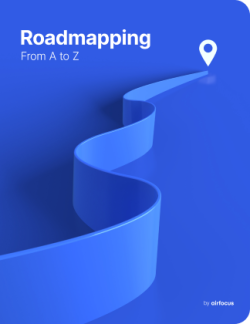Enterprise Architecture Planning (EAP)
What is enterprise architecture planning?
Definition of enterprise architecture planning (EAP)
Enterprise architecture planning (EAP) is a process by which organizations define how IT and information systems will be used in a business to meet its goals. It is a hierarchical process, starting with assessing the systems the organization uses today, how things could work in the future, and the steps needed to implement the changes required.
Benefits of enterprise architecture planning
EAP aims to improve how information, technology, and business goals interact. It can convert abstract business strategy and goals into concrete processes and systems, delivering several key benefits.
1. Improved access to data
In the modern world, every job needs access to some form of data. With efficient information architecture, staff can get access to information when it is needed, where it is needed and in the right format to do their job well. This increases both productivity and the return-on-investment of IT expenditure.
2. Increased ability to adapt to changing business needs
Without quick access to accurate information, executives and managers are unable to make rapid, data-driven decisions. By using EAP, key decision-makers can quickly assess the current state of the business and make strategic changes in reaction to threats and opportunities quickly.
3. Better business efficiency
Creating an enterprise architecture clarifies how all IT components in an organization work together. This has a range of efficiency benefits, including:
Allowing wasteful solutions to be removed or replaced reducing costs and increasing productivity
Allowing critical or profitable systems to be prioritized for additional development, thereby decreasing risk and increasing revenues
Establishing a process for the evaluation and purchase of new technologies, empowering the business to adopt new technologies (such as the cloud, IoT, machine learning and AI) before competitors, leading to a competitive advantage
Standardization of systems improves communication, which in turn improves staff productivity
What are some common challenges in enterprise architecture planning?
Despite its wide-ranging benefits, enterprise architecture planning can be a challenging process. According to "Enterprise Architecture As Strategy" as few as 5% of EAP projects are effective.
The most common challenges are:
Lack of management commitment and ownership, leading to an inability to enact change
Lack of staff resources, hardware, software and consultancy
A rigid bureaucracy that hinders (or actively obstruct) the changes required
Lack of communication between key stakeholders within the organization
There can also be challenges with focusing too much on methodology over results. Pallab Saha writes in the Handbook of Enterprise System Architecture in Practice:
"Sadly the current practice of EA seems preoccupied with box-ticking implementations of best practice frameworks, processes and toolsets. All too often enterprise architects are more concerned with creating endless documentation than any real architectural evolution" (Saha 2007, page 194)
Enterprise architecture methodologies
EAP is applied by using standardized methodologies. According to CompTIA, there are three leading methods for conducting enterprise architecture planning.
The open group architecture framework (TOGAF)
This is a high-level framework for IT management, which aims to align IT goals with business goals. It has four primary goals:
Making a consistent vocabulary for talking about technology
Preferring open standards to proprietary solutions to prevent login
Saving time and money by using resources effectively
Accurately and demonstrably measuring return-on-investment
The Zachman framework for enterprise architecture
The Zachman framework is best understood by comparing it with an alternative. Whereas typical systems development occurs in a series of steps, the Zachman framework organizes around 6 different points of view:
Planner's view (scope context): this describes the purpose of the business and the overall strategy at a high-level
Owner's view (business concepts): this covers key business concepts
Designer's view (system logic): this covers how the system will meet the organization’s information needs
Implementers view (technology physics): this considers how the system will be made and what constraints exist
Sub-constructor’s view (component assembles): this represents implementation details of parts of the system
User’s view (operations classes) – this is a view of the system running in its operational environment.
Each view is asked who, what, when, where, why, and how, which produces a matrix of 36 categories. This process will show gaps, overlaps, and redundancies, which the framework aims to reduce.
Federal enterprise architecture framework (FEAF)
This is a framework designed by the US government to measure the effectiveness of IT in federal agencies. By standardizing the EAP approach across federal agencies, they can compare resource usage, identify efficiency savings and improve the services they provide.
FEAF centers around six interconnected models:
Application reference model: this identifies common solutions that can be shared between agencies to benefit for economies of scale
Business reference model: This focuses on business goals and agency collaboration
Data reference model: This reviews what data is currently kept, how to access it and how to best use it
Infrastructure reference model: This focuses on network technology (such as servers) required to deliver systems
Performance reference model: This measures the impact of systems on goals
Security reference model: This is a common federal language for discussing the security of a solution
Though these are the three most common methods, others do exist targeting specific industries or products. For example, the European Space Agency has a framework called the European Space Agency Architectural Framework (ESAAF) and SAP has the enterprise architecture framework.

General FAQ

Glossary categories
Build great roadmaps

Experience the new way of doing product management








